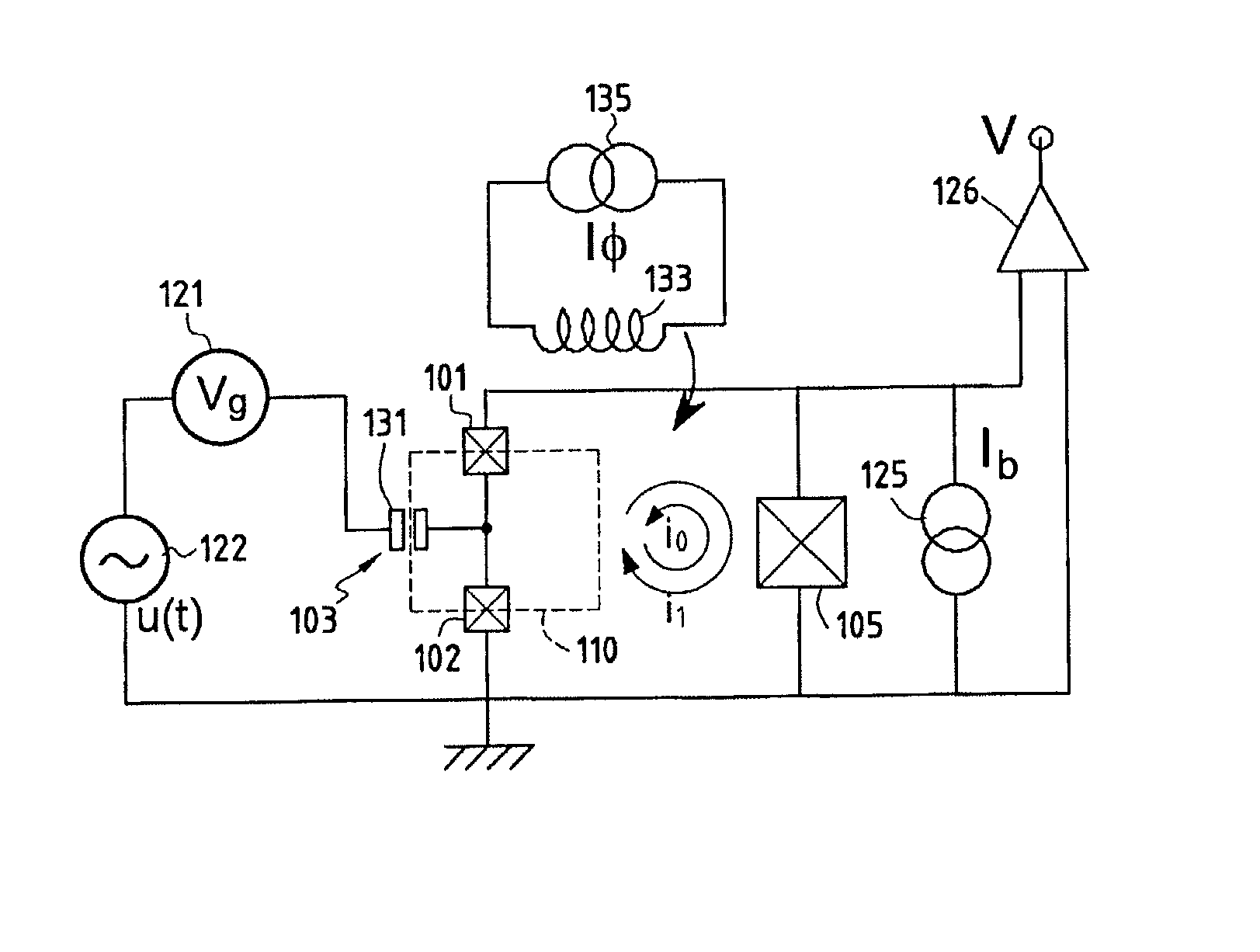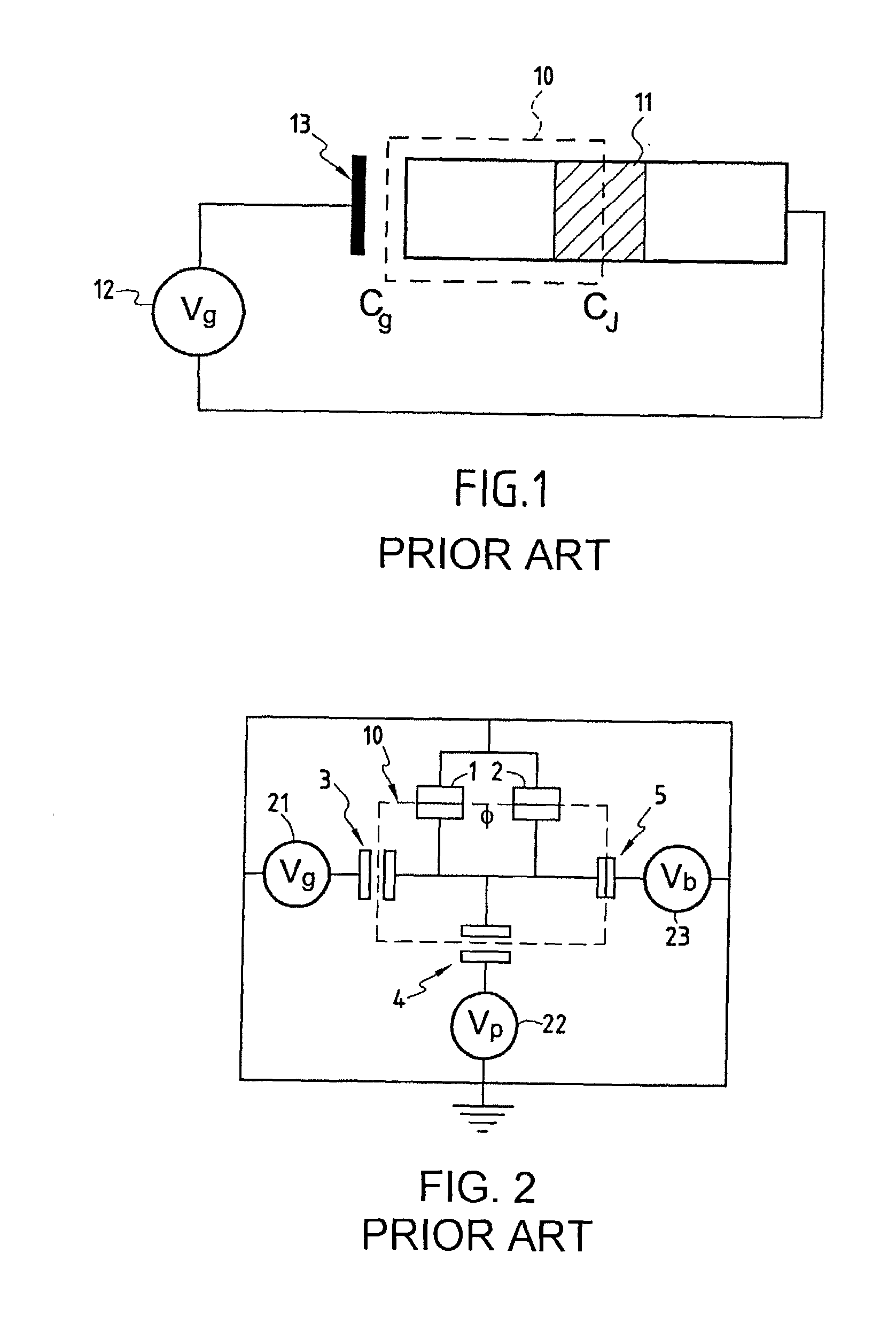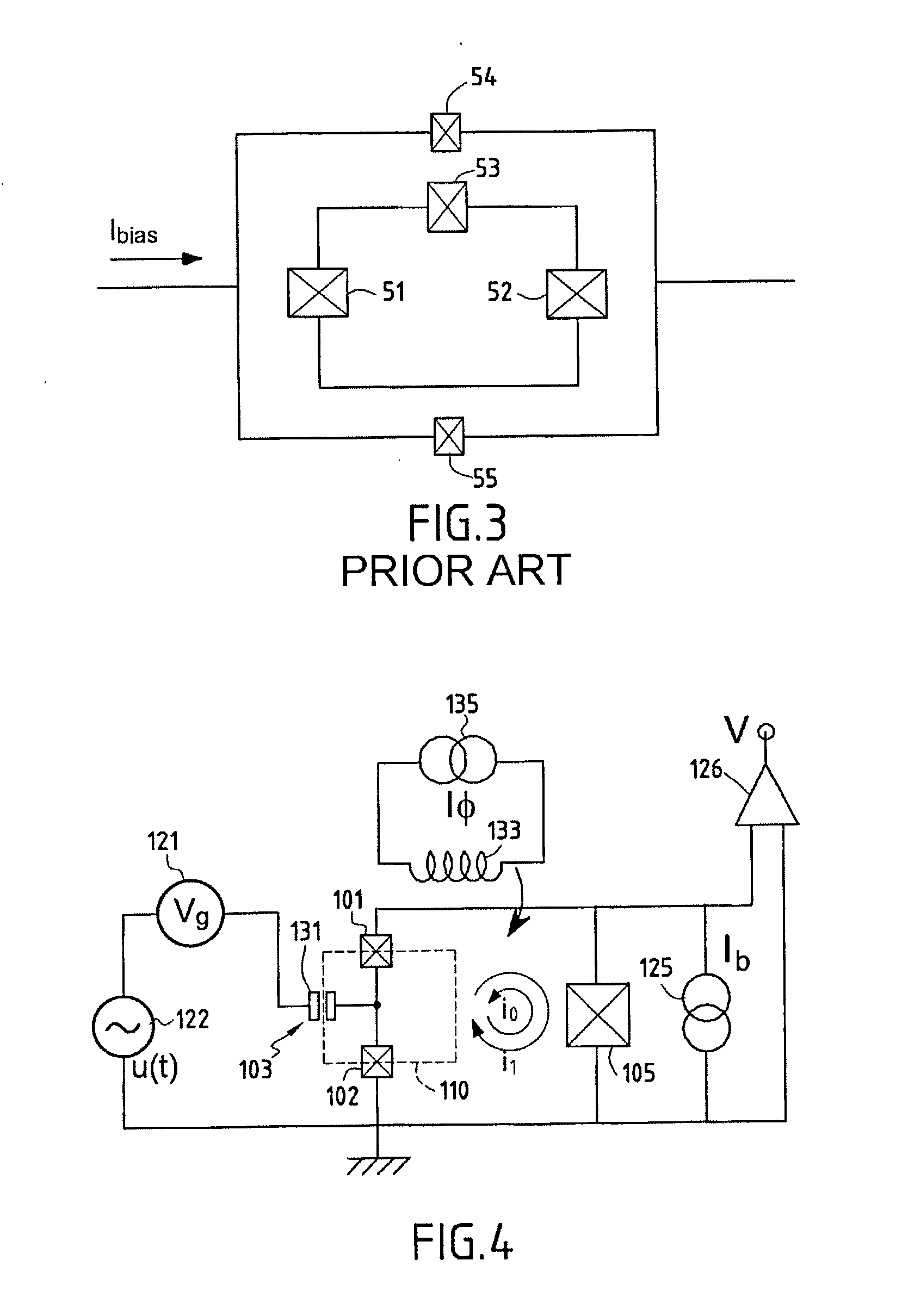Superconducting quantum-bit device based on josephson junctions
- Summary
- Abstract
- Description
- Claims
- Application Information
AI Technical Summary
Problems solved by technology
Method used
Image
Examples
Embodiment Construction
Invention
[0054] A superconducting quantum-bit (or qubit) device according to the invention makes it possible to increase the coherence time over that of the devices of the prior art and to increase the reading reproducibility. To do this, two principal degrees of freedom are used simultaneously, namely a charge and a phase .delta..
[0055] The device according to the invention will be described more particularly with the aid of the diagram in FIG. 4.
[0056] The charge principal degree of freedom is that of a Cooper-pair box 110, the ratio of the Josephson energy E.sub.J to the Coulomb energy E.sub.C of the effective junction corresponding to the stake in parallel of the two junctions 101, 102 of which is between 1 and 12 and preferably between 5 and 12. Its charge nature is exploited in order to manipulate the quantum bit by applying voltages to the gate electrode 131 of the box 110. The principal degree of freedom in the nature of a phase .delta. is characterized by the ratio of the J...
PUM
 Login to View More
Login to View More Abstract
Description
Claims
Application Information
 Login to View More
Login to View More - R&D
- Intellectual Property
- Life Sciences
- Materials
- Tech Scout
- Unparalleled Data Quality
- Higher Quality Content
- 60% Fewer Hallucinations
Browse by: Latest US Patents, China's latest patents, Technical Efficacy Thesaurus, Application Domain, Technology Topic, Popular Technical Reports.
© 2025 PatSnap. All rights reserved.Legal|Privacy policy|Modern Slavery Act Transparency Statement|Sitemap|About US| Contact US: help@patsnap.com



